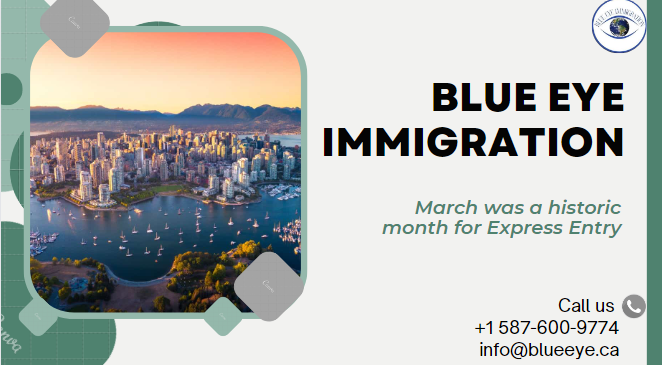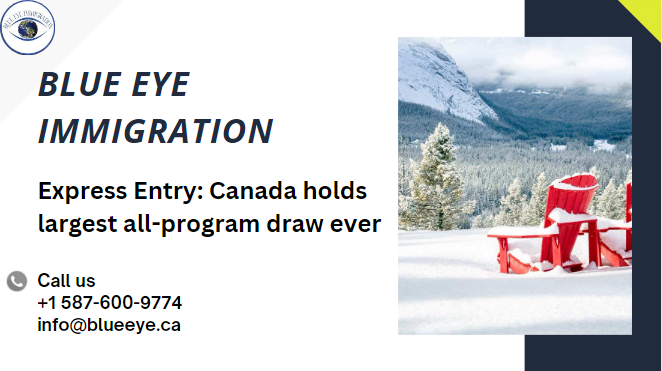In March 2023, Express Entry hit four major milestones, including setting a record for the most Invitations to Apply (ITAs) issued in a single all-program draw since the application management system began operating in 2015.
Express Entry is an application management system run by Canada’s federal government, used to cumulatively manage immigration applications from three programs – the Canadian Experience Class (CEC), the Federal Skilled Workers Program (FSWP) and the Federal Skilled Trades Program (FSTP).
The prevalence of this system is evident through the Immigration Levels Plan 2023-2025, which indicates that Canada wants to welcome at least 82,000 new immigrants to this country through Express Entry over each of the next three years.
Note: The latest Immigration Levels Plan states that Canada is targeting 82,800 Express Entry immigrants in 2023, followed by 109,020 in 2024 and 114,000 in 2025.
On the path towards this goal, Canada’s immigration system experienced several milestones through Express Entry during the month of March. The following will review these marquee moments.
1. Most ITAs in a single month in over two years, second-most all-time
In March, Immigration, Refugees and Citizenship Canada (IRCC) issued their highest number of ITAs in a single month since February 2021. With a total of 21,667 ITAs issued across four draws throughout the month, this figure also makes March 2023 the second-largest Express Entry month since the program’s inception eight years ago.
2. Largest all-program draw(s) in Express Entry history
IRCC set a new record for the largest all-program draw in Express Entry history this past month, besting a record set in January this year. This was achieved on March 15, when 7,000 candidates were invited to apply for PR in Canada.
Note: The previous record was 5,500 ITAs issued in a draw on January 18
Canada’s immigration department proceeded to match this ITA figure in two succeeding draws as well, meaning that IRCC conducted draws that issued 7,000 ITAs for three straight weeks.
3. Two weeks, 21,000 ITAs
As a product of the above milestone, IRCC issued 21,000 ITAs over a two-week period, as the immigration department conducted three draws between March 15 and March 29.
Beginning with the initial record-setting draw on March 15 (see more above), IRCC invited 7,000 immigration candidates to apply for Canadian PR in an all-program draw. Following that up with a surprise all-program draw just eight days later, an additional 7,000 candidates received ITAs from Canada’s immigration department on March 23. Finally, six days following that draw, 7,000 more economic immigration candidates were invited to apply for permanent resident status in Canada.
4. Lowest all-program draw Comprehensive Ranking System score in 27 months
Success in the Express Entry system is predicated on high Comprehensive Ranking System (CRS) scores. This is because only those who have a CRS score above the cut-off score for a particular draw will receive an ITA from IRCC during that round of invitations.
It is therefore worth noting that CRS scores at the end of March hit their lowest (for all program draws) since December 2020. As of March 29, the cut-off CRS score fell to 481 after coming in at 484 during the March 23 draw and 490 on Mach 15.
Note: Back at the end of 2020, the all-program CRS cut-off score was 468 (December 23)
The future of Express Entry
Express Entry draws, from CRS scores to the number of ITAs, have always been hard to predict. This is expected to continue, as there is no standard procedure for when IRCC must hold a draw or how many candidates will receive an ITA during any particular round of invitations.
With that being said, it is expected that IRCC will begin conducting targeted draws at some point in Q2 of this year. While the exact start point of these draws is to be determined, targeted Express Entry draws will allow IRCC to issue ITAs to immigration candidates based on specific factors such as occupation, educational background, language skills, etc. These draws are expected to help Canada better address specific areas of need in the labour market, allowing all provinces and territories to increase the impact of immigration to this country.



